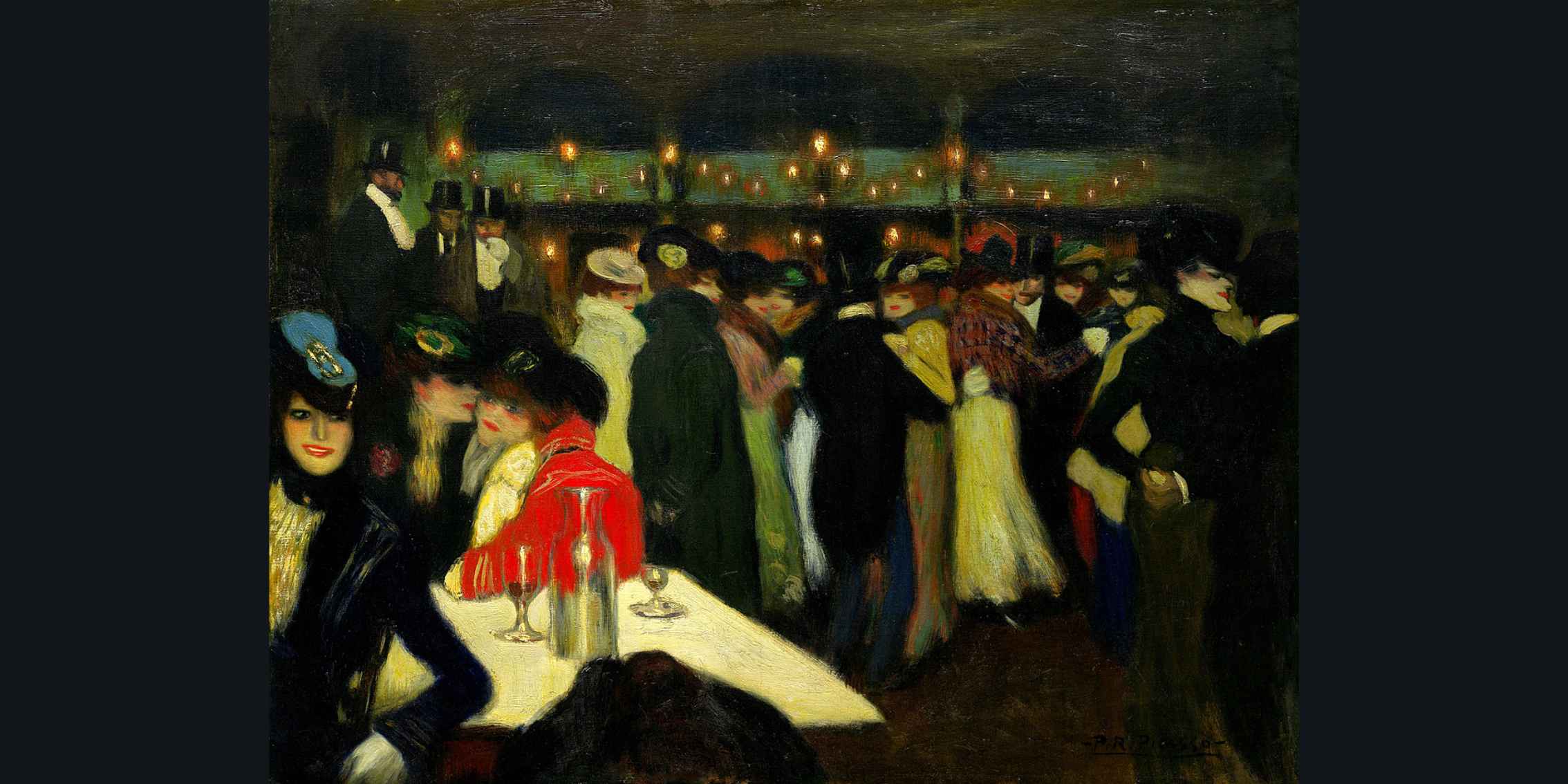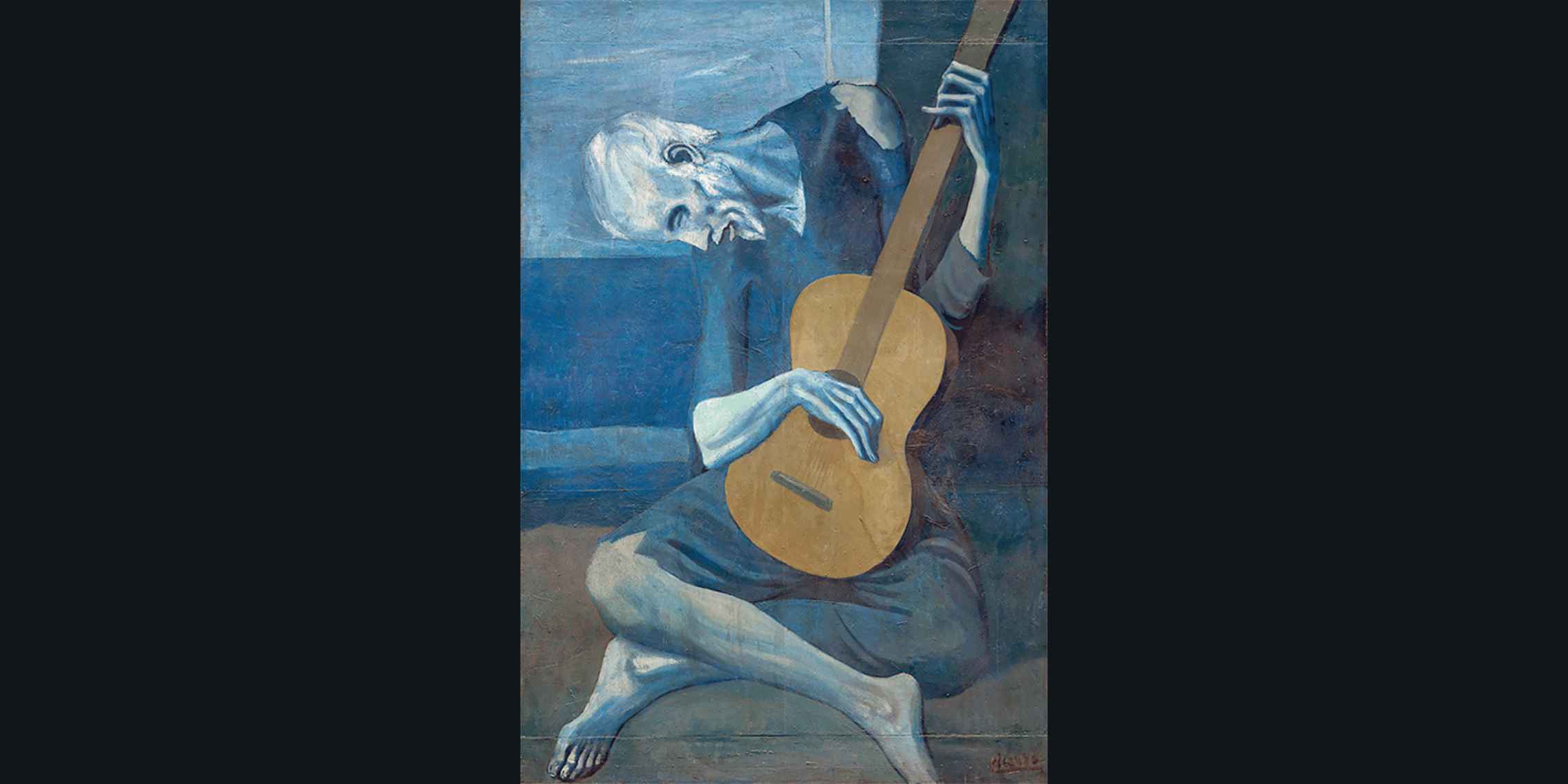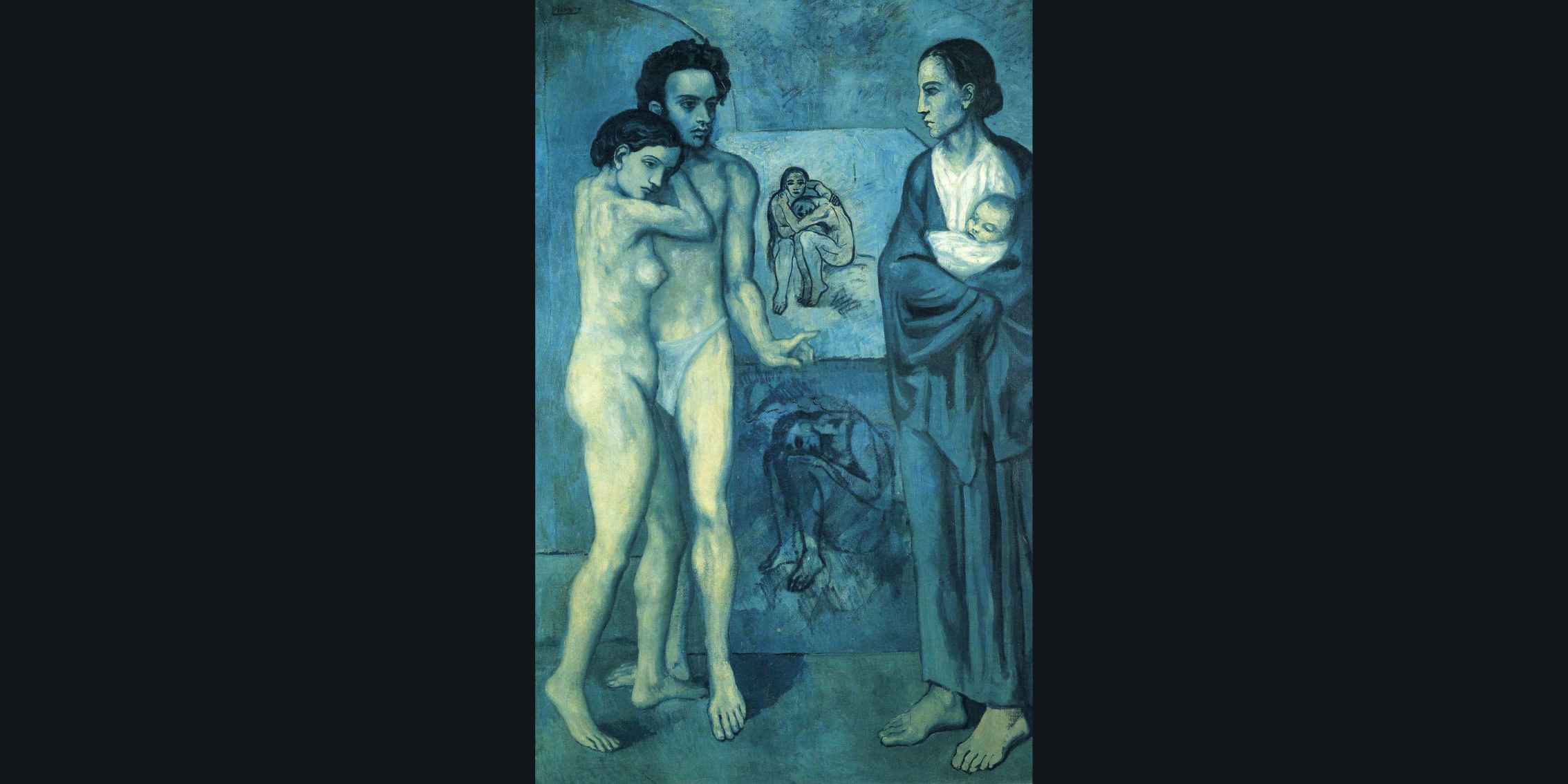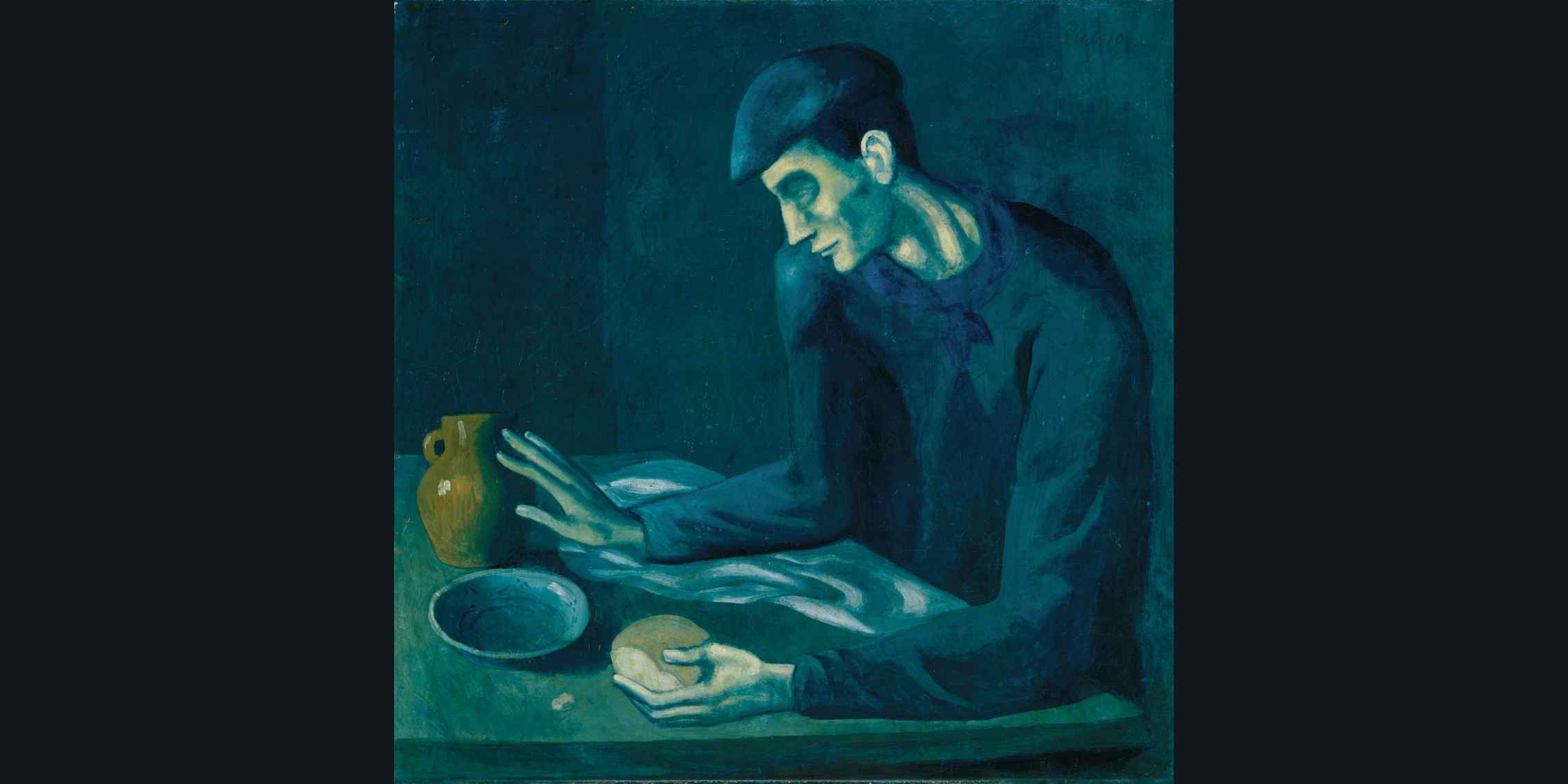Pablo Picasso’s Blue Period (1901–1904) remains one of the most evocative and emotionally charged phases of his career. Defined by its monochromatic palette of blues and blue-greens, this era reflects themes of poverty, isolation, and despair. While today these works are celebrated as masterpieces of modern art, at the time they revealed a young artist grappling with loss, depression, and the harsher realities of the human condition.
The Blue Period began after the tragic death of Picasso’s close friend Carlos Casagemas in 1901. The grief was overwhelming and found direct expression in his art. Abandoning the lively cabaret scenes of Paris, Picasso turned inward, producing paintings dominated by elongated figures, hollow eyes, and a sombre palette. His works from this period explore the universality of suffering, making the personal into something profoundly human and collective.
Before the Blue Period, early Picasso works such as Le Moulin de la Galette (1900) were characterised by a brighter, more optimistic palette. These works reflected the influence of Impressionism and Post-Impressionism, but they lacked the emotional intensity that would soon define his Blue Period.

Le Moulin de la Galette (1900) — a lively early work, showing Picasso’s brighter palette before the descent into the Blue Period.
The most renowned Blue Period paintings are a testament to Picasso's emotional depth. Here’s how they embody the era's key themes and stylistic innovations.
In this seminal work, Picasso’s stylistic choices are inseparable from the work’s emotional impact. The elongated figure recalls El Greco, while the muted tones emphasize fragility and suffering. The contrast between the old man’s frail body and the guitar — the only object painted in warmer brown tones — suggests art as a lifeline amidst despair.

The Old Guitarist (1903) — Picasso uses a muted blue palette and elongated forms to convey spiritual and physical suffering.
A complex, allegorical work, La Vie presents intertwined figures whose meanings remain debated: is it about love, death, artistic creation, or all of them at once? The sombre palette and symbolic juxtapositions reflect Picasso’s personal grief while also engaging with universal human dilemmas.

La Vie (1903) — layered symbolism and a sombre atmosphere reveal Picasso’s grief and inner conflict.
In this canvas, Picasso depicts blindness not only as a physical condition but also as a metaphor for solitude and vulnerability. The sparse composition and restricted palette enhance the figure’s fragility, highlighting the dignity and tragedy of human existence.

The Blind Man’s Meal (1903) — simplified forms and a blue-grey palette create an atmosphere of solitude and despair.
Although it lasted only a few years, the Blue Period had an enduring influence on Picasso’s artistic trajectory. It marked his shift from decorative, observational art toward deeply symbolic, emotionally resonant expression. These works also paved the way for his later experimentation in the Rose Period and eventually Cubism. Today, the Blue Period paintings are not only revered as masterpieces but also as raw, visual testaments to art’s power to transform suffering into beauty.

Tutor at The Art Institute
This article was curated by our team of art experts and highlights concepts from our Art Appreciation course, including our module on Modernism, which covers Picasso’s artistic evolution from early works through to Cubism. Students enrolled in this course benefit from the guidance of expert tutors like fine art lecturer Libby Anson, who has decades of experience editing art historical books, practical drawing guides, and art education publications.
Published: